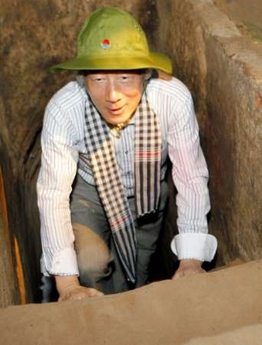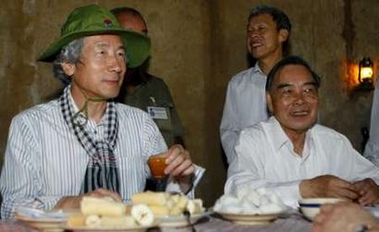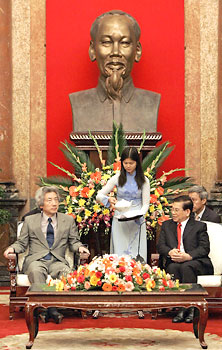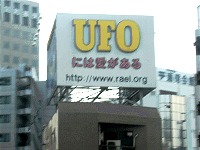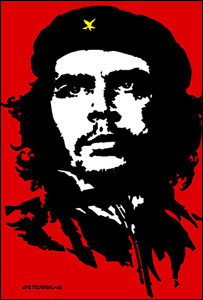The junta in Burma has “successfully” put down much of the protesting in the country, according to NYT, with unconfirmed reports from diplomats of dozens of deaths in the crackdown. The junta is divided as to how to move forward, while a UN inspector has arrived in the country to observe conditions there. This leaves the rest of the “international community” to figure out just how to successfully exert influence and whether stumbling blocks China and Russia can be brought along. One of the many open questions in the crisis in Burma is how Japan will act.
Amazingly, the debate in Japan has been transformed this week as a result of the apparently intentional point-blank shooting of Kenji Nagai, a photographer for a Japanese production company.
The Japanese government has gone from a basically hands-off approach to demanding full explanations at the highest level. Still, new prime minister Yasuo Fukuda has not gone ahead with sanctions and has decided only to demand an explanation and lodge an official protest over the incident. However, most significant is that major commentators have begun calling for Japan to initiate sanctions against the junta, which has so far not been a popular position as Japan has had a policy of so-called dual engagement, giving aid to the country while trying to maintain relations with democracy leaders as well.
Fueling the change in the government’s stance is the fact that Nagai’s death has put a face on the ugliness of tyranny for the Japanese public and the blunt shove and rapid-fire of bullets that felled him symbolize the almost casual brutality that Burma has faced for decades.
The protests’ coverage in the media was transformed overnight at the news of his death and intensified when it was learned that he was killed so brutally, going from the usual “instability in a foreign country that doesn’t affect us” sort of coverage to much more involved reports of the protests that more closely resembled the BBC’s intense up-to-the-minute reporting.
In addition to an increased volume of media coverage, the tone of commentary has changed dramatically. Just this morning, the host of a news talk show noted something to the effect of “the only reason the junta wants to stay in power is to protect their vast financial interests” backing up the biggest justification for targeted sanctions.
Newspaper editorials the morning after Nagai’s death made limited calls for escalated Japanese involvement. From Asahi: “Why not have Japan take the initiative? We must not allow the robes of monks to get tainted with blood.” Yomiuri noted: “As Japan has maintained ties with both the military regime and pro-democracy forces in Myanmar, it should explore ways to contribute to the settlement of that country’s difficult situation.”
However, once the news of Nagai’s apparent cold-blooded killing came out, Asahi’s latest editorial (Title: “Cooperate with Asia to Put Pressure on Myanmar”) dramatized the fact that Nagai continued filming even after being fatally wounded as a symbol of the junta’s fear of free expression of the public’s will. Asahi then called for Japan to initiate unilateral sanctions and wonders why the initial government reaction has been so tepid. “The power of Japan’s diplomacy is being called into question,” it claimed.
Sankei, Japan’s most conservative national newspaper, had a more concrete proposal while sounding the similar tone but did not call for sanctions (title “Time has come for democratization in Myanmar): “Japan, as the largest provider of economic assistance, has a major role to play. We must go further in explaining that if democratization comes to pass, aid from Japan and the West will begin again in earnest.”
Nikkei (Title: “Initiate Sanctions and Put International Pressure on Myanmar’s Military Regime”) goes the furthest of all and calls for unilateral sanctions and full participation in the international pressure on the Burmese government.
While all recognize the key role that other countries, especially China, must play in exerting pressure on the military government, it is heartening that Japanese commentators can see Japan as having an interest in democratization and will not (in some cases at least) merely toe the government line.
Expect the debate in Japan next week to center on whether Japan’s government will announce some form of sanction proposal, either unilaterally or in some kind of international proposal. While the Fukuda cabinet would like to focus on domestic concerns as it must face a tough Diet session, the pressure is on for the government to show it can protect its citizens and “play a responsible role” in the international arena. The Voice of America has described the situation in Burma as Fukuda’s “first crisis” (so we can see what the US would like Japan to do, but it would be smart for US Japan hands like Michael Green to stay out of the debate this time) and the Burma issue will remain at the top of the agenda for a while to come.
Sympathy protests have been going on in Japan (primarily in Nagoya and outside the Burmese consulate in Shinagawa). These protests are critically important to show that the message is being heard in Japan as well and its citizens are keenly aware of the situation. I will be out in Shinagawa this Sunday to show support and I hope some of the MF readers will come out as well!
BTW, Mrs. Adamu has been doing her part to get the message out to the Japanese audience. She has a translation up at BurmaInfo.net, a Japanese-language site for Burma news. The article she has translated is an account of the famous brief encounter the protesters had with democracy leader Aung San Suu Kyi in front of her home in Yangon/Rangoon. You can read the original article in English here.
The video can be seen here.


